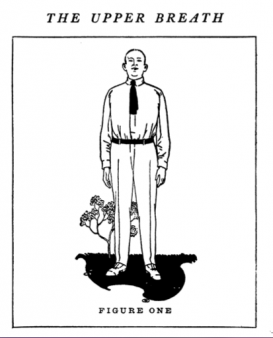Familiar breathing—right under our noses—has at times followed and at times constituted the ever-changing boundary between what is considered “natural” and what is considered “human.” There was, after all, a time when the presence of a willful, autonomous soul was what distinguished the uniquely human from the natural. This soul and its embodied expression had, until the seventeenth-century invention of action “that did not proceed directly from a center or a central repository of immaterial power of any kind,” (Canguilhem, Georges. A Vital Rationalist, p.183) been closely associated with winds, with air, and with breath. Whether it was believed to be dense matter or pure spirit, whether it was thought to permeate a continuous body-environment, or to be condensed in the interior of an autonomous individual, the breath was closely associated with uniquely human thought, will, and emotion. And the breath, therefore, determined ways of seeing—and being—a human body.
Together with the rise of new definitions and disciplines of the natural and human in the late nineteenth century, breathing became a fluid and popular object of practice, study, and theorizing (and at times both subject and object, as in the case of self-experimenting physiologists like Angelo Mosso who worried about the effect of knowing he was recording on his respiration). A burst of hygiene and self-care manuals suggested that formerly natural breathing could—and should—be intentionally practiced in order to cultivate health, longevity, and powerful self-expression. How, asked a 1930 American Journal of Psychology article, “Learning to Inhibit and Control Breathing,” had Harry Houdini managed his death-defying escapes from apparently unlimited variations on death by suffocation? From its beginnings, experimental psychology had used studies of human breathing (as well as comparison with that of the occasional owl or cocker spaniel) to gain, through the body, tangible, measurable access to otherwise inaccessible mental contents and experiences including attention, psychosis, and aesthetic pleasure. But beneath the well-posed scholarly questions, and the popular practices and displays of physical culture lurked more fundamental concerns: Was man a being capable of autonomous, willful action, and if so what were the sources of this thought, creativity, and self-control? What was breathing, really?

